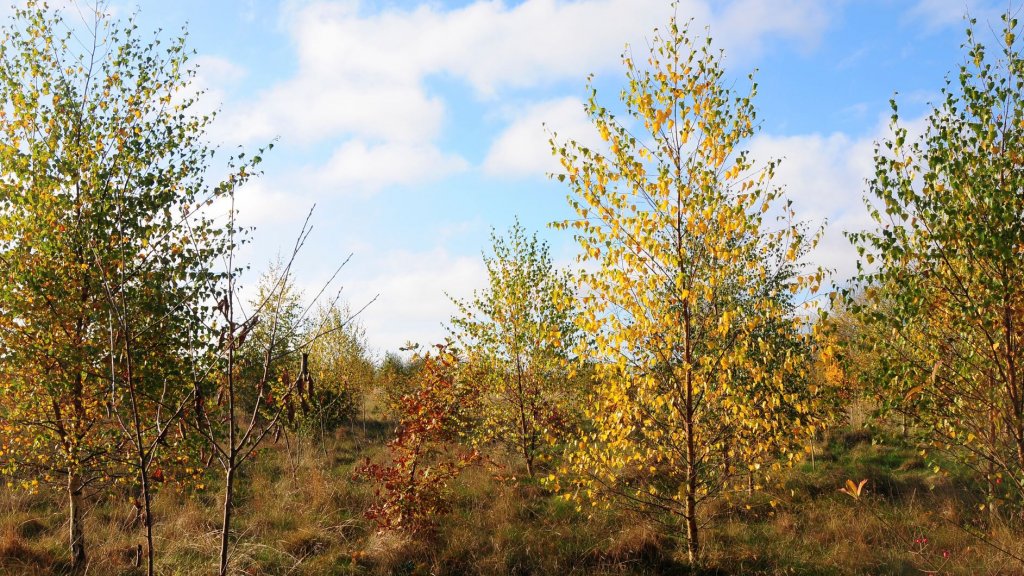Woodland Planting ‘Must More Than Double’ To Tackle Climate And Nature Crises

Woodland creation must more than double from this year, to help reach net zero carbon emissions and tackle wildlife losses, conservationists have said.
The Woodland Trust has published an emergency tree plan which urges the Government to boost new planting of woods and other trees, protect and restore what the UK already has, and prevent plant diseases.
Each country needs to set new annual targets that will put the UK as a whole on track to have almost a fifth (19%) of its land covered by trees and woodland by 2050.
Councils also need to write an emergency tree plan, the trust says, to identify land for trees and set annual expansion targets, while protecting existing woods and trees in their area.

And all developments must have a minimum of 30% of their land covered with canopy, by retaining existing mature trees and planting street trees and woodland made up of native, UK-sourced species, the plan urges.
The UK currently has one of the lowest levels of tree cover, at 13%, compared with the European average of 37%, with only about half of that native woodland.
The Government’s advisory Committee on Climate Change has said as much as 19% needs to be covered with trees by 2050 in order to help meet targets to cut the UK’s greenhouse gas emissions to zero.
That will require the planting of an extra 1.5 million hectares (3.7 million acres) of woodland.
There needs to be an increase from the 13,390 hectares planted in 2018/2019 across the UK, to about 35,000 hectares a year up to 2025, and then even bigger increases to meet the 2050 goal, the Woodland Trust said.
New targets must take into account threats facing existing woodlands, such as the loss of millions of trees from ash dieback in the next 10 to 20 years, and protect old trees and ancient woods which store large amounts of carbon.
The majority of new trees should be native species such as oak, that a wide range of wildlife depend on to help tackle the climate and nature crises together.

New tree planting can range from expanding native woodland to sustainable commercial plantations, using trees in “agroforestry” farming, hedges, urban trees and individual specimens in the countryside.
All major political parties have backed an increase in trees and woods to tackle the climate and wildlife crises, and the trust says an emergency increase in public investment is needed to protect, restore and expand native tree cover.
There also needs to be investment in UK nurseries to allow for a rapid expansion in home-grown saplings, improvements to biosecurity at the border, and financial support for land owners to provide natural regeneration of woods on their land.
Dr Darren Moorcroft, chief executive of the Woodland Trust, said the picture had “never been bleaker”, with planting rates the lowest in decades, one in 10 wildlife and plant species at risk of extinction, and disease and pests could wipe out millions of trees.
“We’ve seen a lot of talk about trees and that is welcome, but we’ve yet to see the action that is required.
We rely on the generosity and enthusiasm of the public to help us protect, restore, and plant #woods and #trees.
Donate today and help us #StandUpForTrees https://t.co/Axs5lXe0f5 pic.twitter.com/pdVHSEkY9p
— Woodland Trust🌳 (@WoodlandTrust) January 19, 2020
“We’ve left ourselves a phenomenal amount to do in a very short space of time. The moment of crisis has come and action needs to be taken this year,” he said
“Today we launch our Emergency Tree Plan, which outlines what needs to be done to increase our tree cover to help tackle the climate and nature emergencies, and to help the UK reach its targets for net zero carbon emissions.
“Government needs bold policies and local authorities and landowners need the support to act swiftly and of a scale to expand tree cover across the UK,” he said.
A Defra spokesperson said: “Our woodlands are vital for providing timber, protecting wildlife and helping us improve our environment for the next generation.
“We are proud of our record on woodland creation but we know there is still more we can do.
“Our crystal clear commitment to increase woodland cover and tree planting remains at the heart of our ambitious environmental programme.
“We plan to increase tree planting rates up to 30,000 hectares per year, across the UK, by 2025 – working closely with devolved authorities, communities and landowners to make this happen.”
Emily Beament is PA Environment Correspondent.




